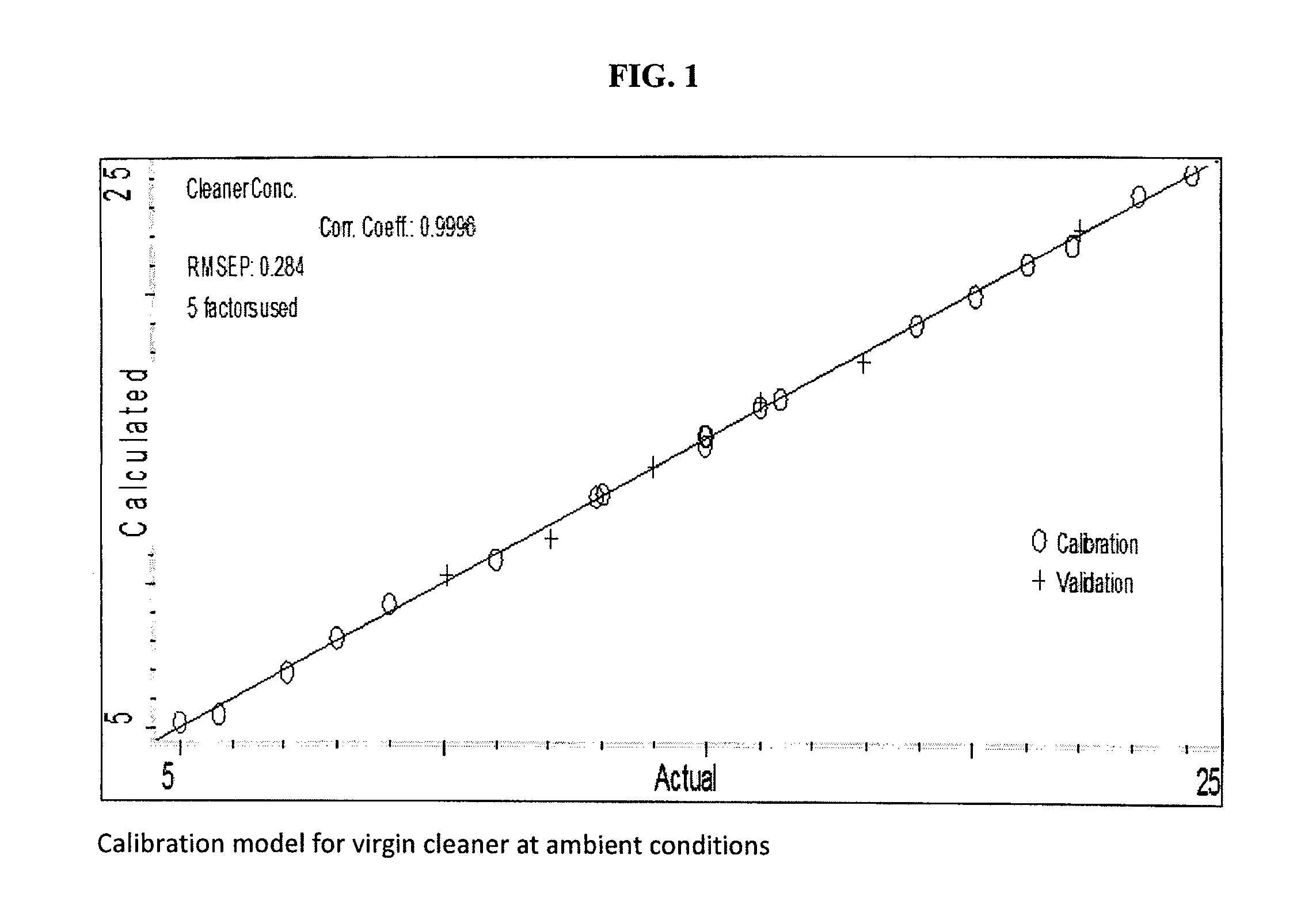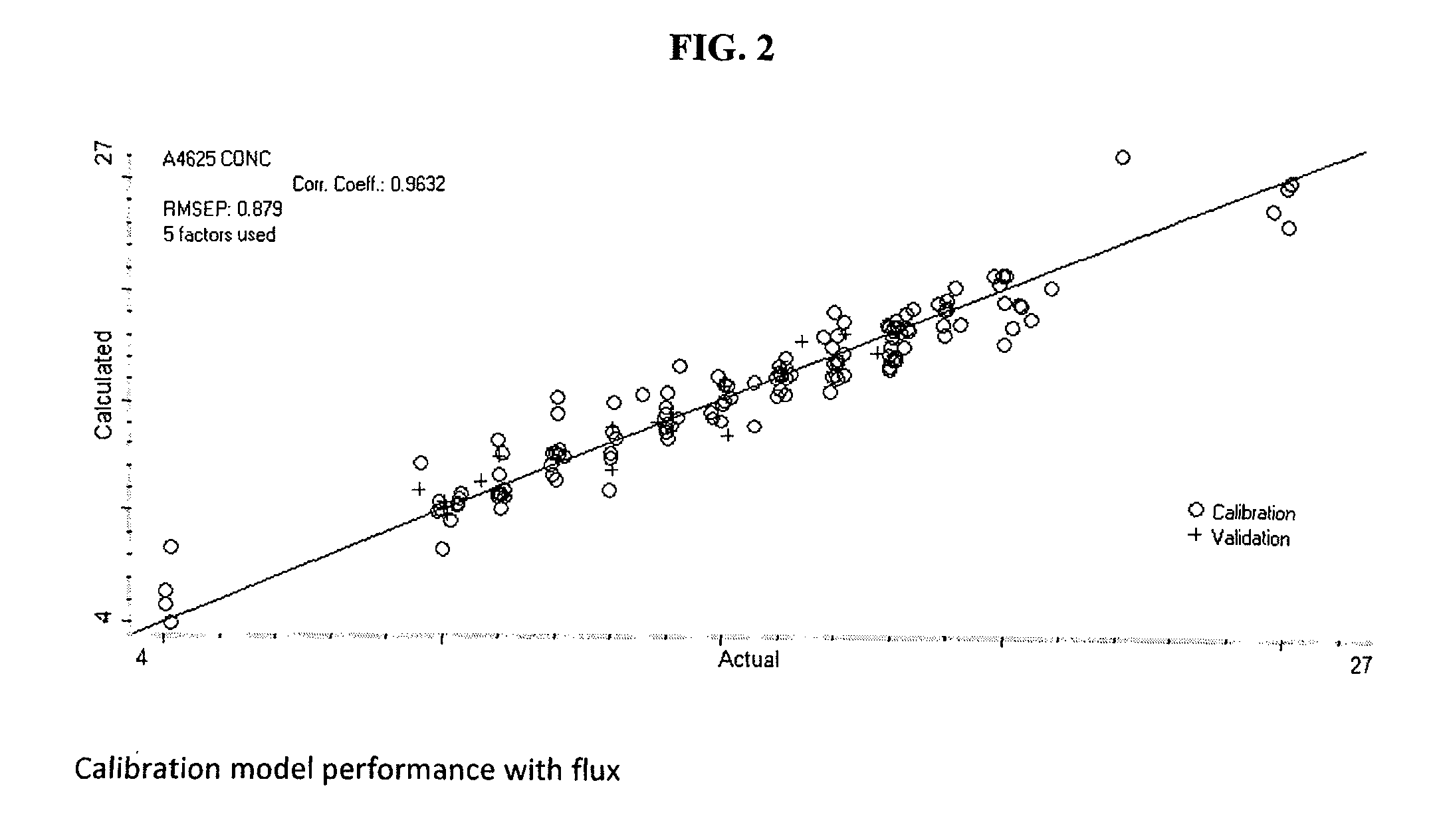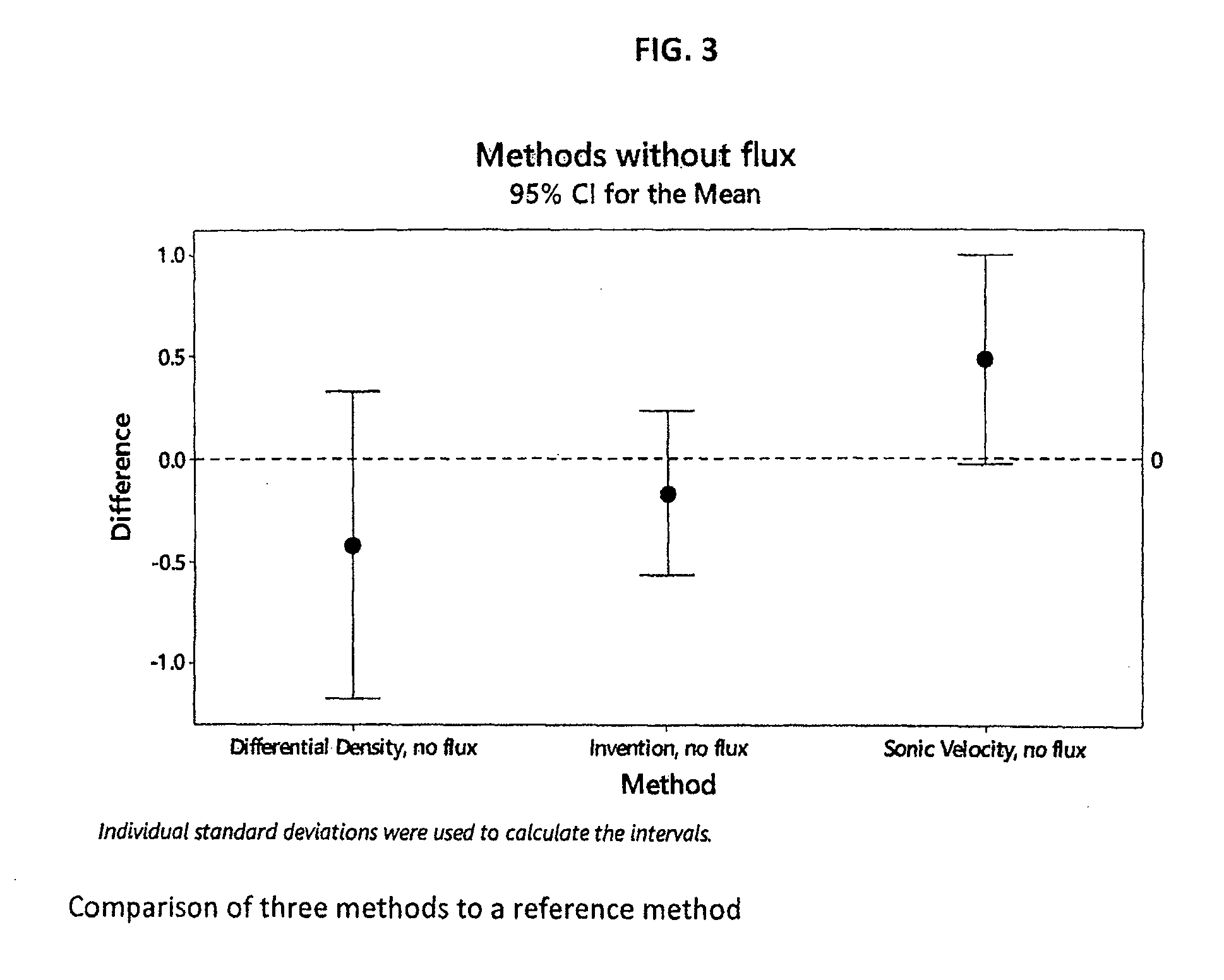Method and apparatus for monitoring and controlling a cleaning process
a cleaning process and monitoring technology, applied in the direction of process and machine control, optical radiation measurement, instruments, etc., can solve problems such as loss of life, and achieve the effect of ensuring the effectiveness of the cleaning process and lowering the process cos
- Summary
- Abstract
- Description
- Claims
- Application Information
AI Technical Summary
Benefits of technology
Problems solved by technology
Method used
Image
Examples
example 1
Initial Assessment
[0049]A calibration curve was constructed using the apparatus as described above, except without the RTD, and standards of known concentration. The cleaning agent standards were prepared gravimetrically by diluting concentrated cleaning agent with deionized (DI) water on an analytical balance with a resolution of 0.0001 g. The cleaning agent concentration spanned the concentration range of 5-25 wt. %, which is substantially wider than the typical concentration used in cleaning operations of 13-16%. All together 25 standards were used. Standards and samples were measured at ambient temperature, approximately. The FT-NIR scanned the range of wavelengths from 1.0-2.5 μm. As noted previously, an air background was subtracted from the spectra. Chemometric analysis was applied to determine what data pre-treatments, calibration model, and spectral regions produced acceptable results. The spectrum from approximately 2.0-2.12 μm was selected as it produced a calibration mod...
example 2
Creation of a Representative Calibration Model of the Invention
[0051]A more suitable implementation of the invention was desired. It is noted that soils in the bath are known to interfere with quantification of the cleaning agent. As a step towards the ideal implementation of the method, which is online and insensitive to soil, a calibration model incorporating interactions that soils have on the NIR spectrum of the bath was created. As the number of possible soils is limitless, a subset was selected. The subset consisted of solder fluxes of the rosin mildly activating type (RMA), no-clean, and water soluble types, which were reflowed to create the most realistic representation of the ideal implementation. These selected soils are representative of the soils the cleaning agent is used to remove. To further simulate the implementation of the method to an actual cleaning process the total concentration of soils in the bath spanned the range of 0.0-8.0 wt. %, well in excess of the 3 wt...
example 3
Comparison with Controls without Flux
[0052]The calibration model that was developed above, was compared to other methods for determining the virgin cleaning agent concentration in an off-line manual system. The methods it was compared with were methods based on refractive index, differential density, and sonic velocity, all of which are in current commercial use. The samples were virgin cleaning agent diluted to 13%, 15%, and 18% by weight in DI water. Five samples of sufficient quantity to produce samples for all methods, about 1.5 L, was prepared gravimetrically for each concentration. This resulted in fifteen samples (3 different concentration, 5 samples per concentration) to be analyzed by each method. The temperature of all samples were maintained at 150±5° F. (65° C.) while measurements were being made, to simulate process conditions.
[0053]The refractive index of the bath was measured using a handheld refractometer that had automatic temperature compensation. This is an import...
PUM
 Login to View More
Login to View More Abstract
Description
Claims
Application Information
 Login to View More
Login to View More - R&D
- Intellectual Property
- Life Sciences
- Materials
- Tech Scout
- Unparalleled Data Quality
- Higher Quality Content
- 60% Fewer Hallucinations
Browse by: Latest US Patents, China's latest patents, Technical Efficacy Thesaurus, Application Domain, Technology Topic, Popular Technical Reports.
© 2025 PatSnap. All rights reserved.Legal|Privacy policy|Modern Slavery Act Transparency Statement|Sitemap|About US| Contact US: help@patsnap.com



